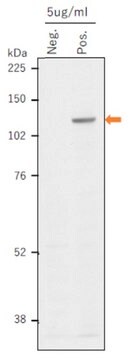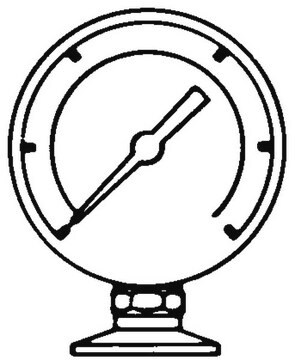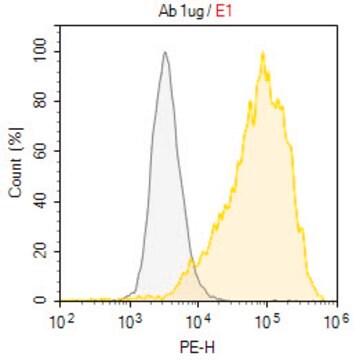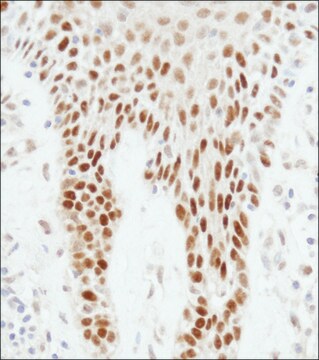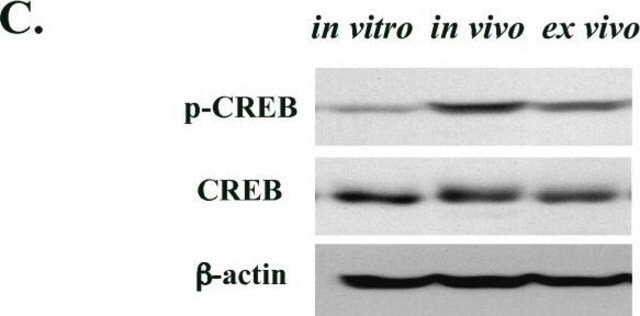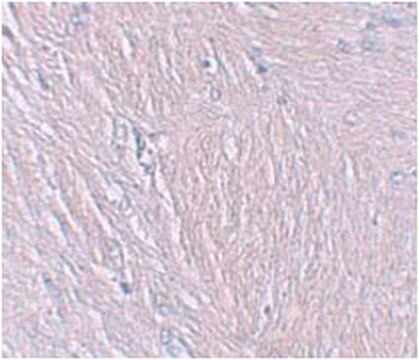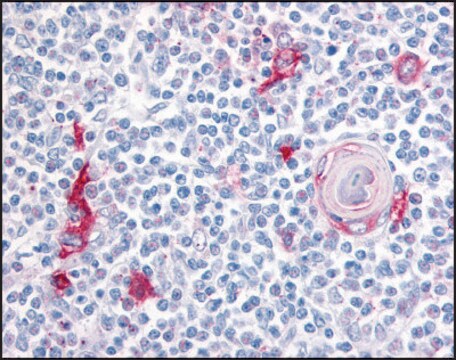MABC1795
Anti-phospho-TERT (Thr249) Antibody, clone TpMab-3
Synonym(s):
EC:2.7.7.49, HEST2, TP2, Telomerase catalytic subunit, Telomerase reverse transcriptase, Telomerase-associated protein 2
About This Item
Recommended Products
biological source
mouse
Quality Level
antibody form
purified antibody
antibody product type
primary antibodies
clone
TpMab-3, monoclonal
mol wt
calculated mol wt 127 kDa
observed mol wt ~127 kDa
purified by
using protein G
species reactivity
human
packaging
antibody small pack of 100
technique(s)
immunofluorescence: suitable
immunohistochemistry: suitable
western blot: suitable
isotype
IgG1κ
epitope sequence
N-terminal half
Protein ID accession no.
UniProt accession no.
storage temp.
2-8°C
Gene Information
human ... TERT(7015)
Specificity
Immunogen
Application
Isotype testing: Identity confirmation by Isotyping Test.
Isotyping Analysis: The identity of this monoclonal antibody is confirmed by isotyping test to be mouse IgG1k.
Tested Applications
Immunofluorescence Analysis: A representative lot detected TERT in Immunofluorescence applications (Matsuda, Y., et al. (2022). J Pathol. 257(2):172-185).
Western Blotting Analysis: A 1:250 dilution from a representative lot detected TERT in Mitotic HeLa cells with RO3306 treatment (negative) versus mitotic HeLa cell samples (positive), where the positive control samples were obtained by IP using clone 10E9-2 to enrich hTERT ( Data courtesy of Dr. Kenkichi Masutomi, National Cancer Center Research Institute, Tokyo, Japan).
Western Blotting Analysis: A representative lot detected TERT in Western Blotting applications (Matsuda, Y., et al. (2022). J Pathol. 257(2):172-185).
Immunohistochemistry Applications: A representative lot detected TERT in Immunohistochemistry applications (Matsuda, Y., et al. (2022). J Pathol. 257(2):172-185).
Note: Actual optimal working dilutions must be determined by end user as specimens, and experimental conditions may vary with the end user.
Target description
Physical form
Reconstitution
Storage and Stability
Other Notes
Disclaimer
Not finding the right product?
Try our Product Selector Tool.
Storage Class Code
12 - Non Combustible Liquids
WGK
WGK 1
Flash Point(F)
Not applicable
Flash Point(C)
Not applicable
Certificates of Analysis (COA)
Search for Certificates of Analysis (COA) by entering the products Lot/Batch Number. Lot and Batch Numbers can be found on a product’s label following the words ‘Lot’ or ‘Batch’.
Already Own This Product?
Find documentation for the products that you have recently purchased in the Document Library.
Our team of scientists has experience in all areas of research including Life Science, Material Science, Chemical Synthesis, Chromatography, Analytical and many others.
Contact Technical Service